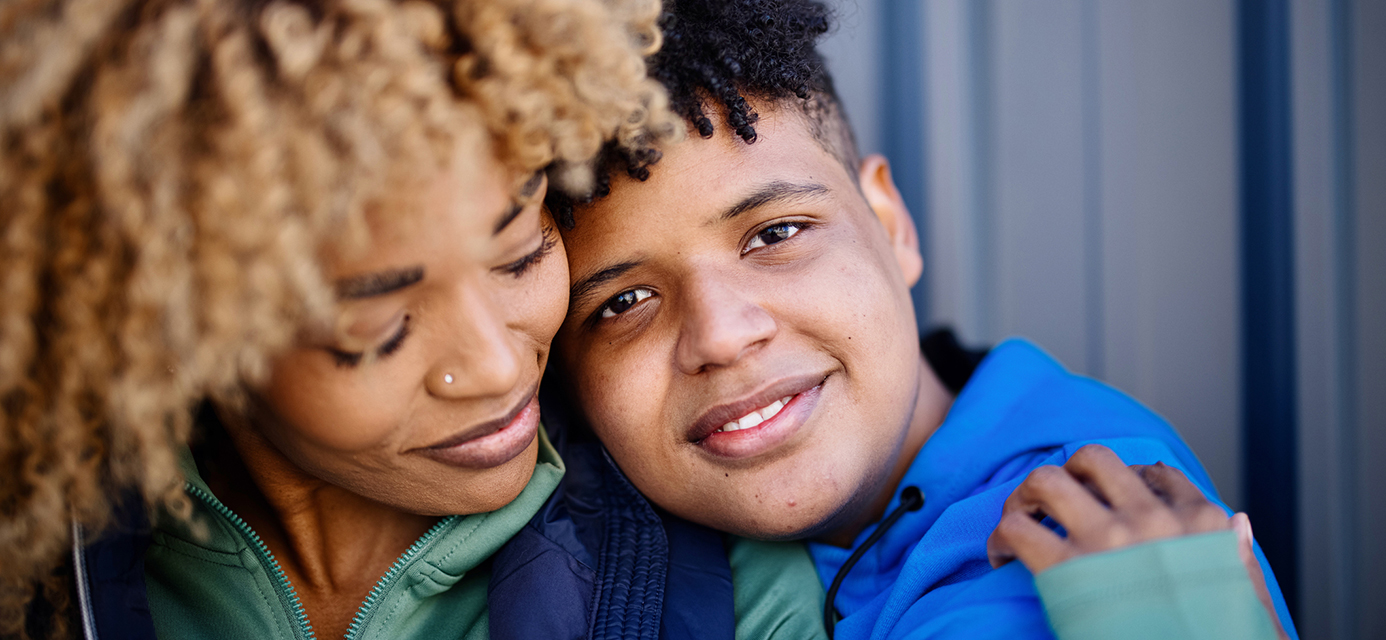BIPOC Mental Health Month, formerly known as National Minority Mental Health Awareness Month, is observed every July. It’s an opportunity to recognize the unique challenges faced by people of color in the United States, and renew our commitment to expanding access to care for BIPOC individuals.
At Newport Academy, we acknowledge the gauntlet of mental health threats faced by BIPOC teens and young adults and we are dedicated to helping young people and their families overcome barriers to care.
Key Takeaways
- BIPOC youth have inherited a legacy of intergenerational trauma as a result of past atrocities enacted against their communities.
- This trauma is complicated by current racial discrimination, bias, microaggressions, and outright violence that many BIPOC people face on a daily basis.
- Stigma, financial cost, and justified mistrust of the medical system are all factors that prevent BIPOC teens, young adults, and families from seeking mental healthcare.
- Mental health professionals need training and support to provide culturally competent care to BIPOC individuals.
Moving from “Minority” to BIPOC Mental Health Month
July was officially named Bebe Moore Campbell National Minority Mental Health Awareness Month in 2008. Campbell was an American author, journalist, teacher, and mental health advocate who worked tirelessly to shed light on the mental health needs of the Black community and other underrepresented communities.
However, the term “minority” is problematic. As Mental Health America states, “The continued use of ‘minority’ or ‘marginalized’ sets up BIPOC communities in terms of their quantity instead of their quality and removes their personhood. The word ‘minority’ also emphasizes the power differential between ‘majority’ and ‘minority’ groups and can make BIPOC feel as though ‘minority’ is synonymous with inferiority.”
BIPOC stands for Black, Indigenous, and People of Color, and encompasses communities including Black/African American, Latinx/Hispanic, Native and Indigenous, Asian American/Pacific Islander, multiracial, and Arab/Middle Eastern/Muslim/South Asian.
The Mental Health Impact of Stress and Trauma Within BIPOC Communities
The effects of trauma on BIPOC communities have long-lasting mental health impacts. Atrocities such as slavery, colonization, cultural eradication, and race-based terrorism play out across generations of families as complex trauma.
Maria Yellow Horse Brave Heart, PhD, Director of Native American and Disparities Research at the University of New Mexico, defines this historical trauma as “cumulative emotional and psychological wounding over the lifespan and across generations, emanating from massive group trauma.”
Within families and cultures, intergenerational trauma is passed down from those who directly experience a traumatic event to the generations that come after them.
For many communities, these traumatic events are not relegated to the past. They are unfolding in real time through gun violence, police brutality, and immigration raids, as well as ongoing microaggressions and discrimination. People of color in America live with a constant undercurrent of stress caused by racism and racial bias.
“Experts have suggested that police violence be viewed as a public health issue, because each killing affects individuals and communities both physiologically and emotionally. Each incident reminds Black youth that, in this country, their lives have been devalued.”
Rebecca Klisz-Hulbert, assistant professor in psychiatry and behavioral neurosciences, Wayne State University, in The Washington Post
Moreover, the stressors associated with low socioeconomic status disproportionately affect America’s communities of color. These include daily stressors created by limited access to quality education, safe housing, and healthcare. Additionally, natural and manmade disasters, such as COVID-19, Hurricane Katrina, Hurricane Maria, and the Flint water crisis, also have a disproportionate impact on marginalized communities.

Obstacles to Quality Care for BIPOC Youth
Despite the higher incidence of trauma exposure they experience, BIPOC youth are less likely to access mental healthcare. In order to effectively support adolescents from BIPOC communities, we must address the range of obstacles that hinder access to care for those who need it. Cost is one of the biggest barriers to care for BIPOC teens and families, as well as for young adults.
Mistrust of the mainstream medical system dissuades many families from seeking care. For Black people, a history of harmful medical research conducted without permission is not easily set aside. In addition, recent immigrants may be unfamiliar with the Western medical models of mental healthcare, and unaware that effective treatment is even available.
Stigma around mental health conditions and treatment is another obstacle to care. For some BIPOC communities, notably Asian Americans, it is reinforced by the “model minority” stereotype—the idea that people from a particular ethnic background are always hardworking, academically gifted, and successful. This myth puts pressure on younger generations to hide their emotional struggles as they attempt to live up to an imagined ideal.

Read “PTSD and Teen Trauma: Symptoms, Signs, and Treatment.”
A Lack of Culturally Competent Care
Even when they are able to access mental healthcare, young people are often treated by providers who don’t look like them and don’t understand their experience. As of 2019, only 3 percent of more than 110,000 US psychologists were Black, 7 percent were Hispanic, 4 percent Asian, 2 percent belonged to other races and ethnicities, and 83 percent were white, according to the APA.
Providers are sometimes unable to recognize and identify the manifestations and causes of trauma, anxiety, and depression in BIPOC youth. Along with cultural barriers, language barriers may further complicate accurate diagnoses. This lack of cultural competency in healthcare can create an additional layer of trauma for young people. As defined by the American Psychological Association, cultural competency is “the ability to understand, appreciate and interact with people from cultures or belief systems different from one’s own.” Hence, a culturally competent mental health care provider is able to consider how a person’s culture, race, and ethnicity may influence their mental health, and the most effective way to treat them.
When providers are not culturally competent, adolescents may be misdiagnosed or redirected to the juvenile justice system rather than being treated for underlying mental health issues. Moreover, standard mental health assessments used in the field are not adequate for diagnosing mental illnesses in BIPOC populations. And national investment in clinical research, which could shed light on issues like these, lags far behind funding for other types of research.
1/2 of 1%
National Institutes of Health (NIH) funding for studies with Asian American, Native Hawaiian, and Pacific Islander participants represents less than one-half of 1% of the NIH budget.
2x
White teens are twice as likely as Asian teens to receive mental healthcare in a specialty setting.
73%
The rate of suicide attempts for Black adolescents rose 73 percent from 1991 to 2017.
57%
of Latinx youth with serious mental illness do not receive treatment for their condition.
1 in 5
Native/Indigenous LGBTQ young people attempted suicide in the past year.
3%
of US psychologists are Black.
Sources: Journal of the American Medical Association, Substance Abuse and Mental Health Services Administration, CDC, The Trevor Project, American Psychological Association
How We Can Move Forward
As practitioners increase their awareness of the reasons for the disparities in the mental health landscape, there is hope. Providers must take a posture of cultural humility—a genuine curiosity about the experiences, resources, and practices that can inform and complement treatment. We must educate ourselves—as individuals, as a field, and as a society—in order to improve the options for BIPOC mental health needs.
“In clinical care, cultural humility can serve as a guiding concept for the practice of trauma-informed care in centering and empowering patients on their journey of healing, rather than making assumptions about the patient’s experience or practicing an authoritative, power-over communication style.”
FOCUS, The Journal of Lifelong Learning in Psychiatry
5 Ways Newport Is Working to Expand Access to Care for BIPOC Youth
Newport pledges to do our part to expand access to high-quality care for BIPOC teens, young adults, and families struggling with mental health issues, through:
- Providing our clinicians with the training and support they need to offer culturally competent care
- Working with major insurance companies, both In-Network and out of network, to make our services affordable
- Taking steps to ensure diversity, equity, and inclusion in the workplace
- Actively campaigning to reduce the stigma around seeking mental healthcare
- Giving families practical ways to move from mental health awareness to action.
Together, we can work toward providing more effective and compassionate care for teens and families from BIPOC communities, while honoring and learning from their resilience and strength.
How Summer Treatment Supports Young People to Flourish
Summer can be the ideal time for young people and families to access treatment without interrupting school and other year-round activities. Teens who are experiencing more acute mental health symptoms, such as suicidal ideation or major depressive disorder, can benefit from residential treatment. Newport Academy’s residential programs provide tailored treatment plans that address mental and physical needs and include individual, family, and group therapy.
For some teens and kids, a full-day outpatient program with an academic support component may be the optimal approach to help them get back on track. They can build healthy coping mechanisms, excitement about learning, a solid foundation for who they are, and practical skills for organization and time management.
Ultimately, teen students can return to school after treatment with enhanced well-being, a sense of confidence, and the tools they need to succeed academically while making authentic connections with their expanded community.
Contact us today to get started with a teen mental health assessment, at no charge.
Sources:
Current Psychiatry Reports. 2022 Mar; 24: 285–295.
Focus 2020; 18:8–15; doi: 10.1176/appi.focus.20190027.
JAMA Netw Open. 2019;2(7):e197432.
Pediatrics. 2019; 144 (5): e20191187.






